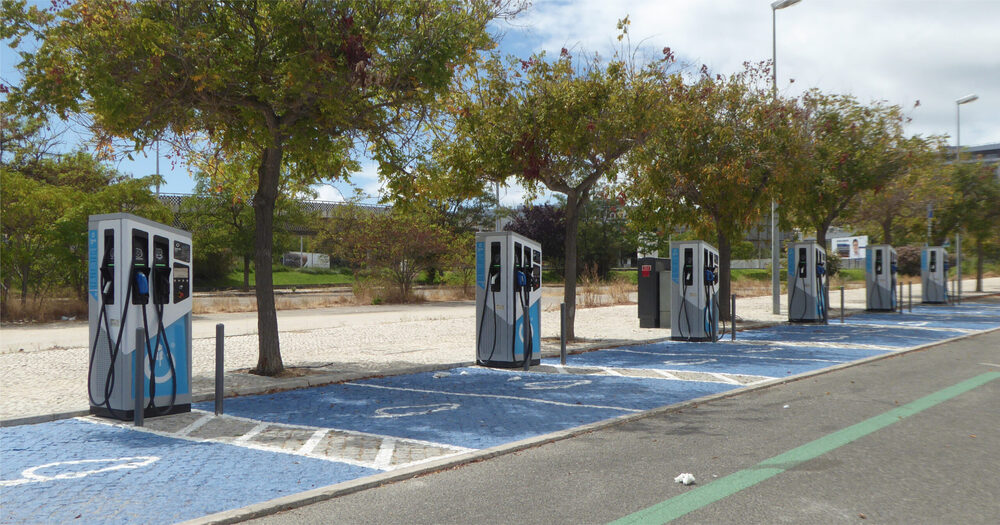On 13 April 2023, the European Alternative Fuels Infrastructure Regulation (AFIR) came into force.
In this regard, Manuel Reis, Vice President of the Board of Directors of the Electric Vehicle Users Association (UVE), states: “This is positive, but there is a gap between what the regulation mandates and what happens in practice.”
As he explains to Mobility Portal Europe, Portuguese Charge Point Operators (CPOs) identified a loophole in the AFIR.

What is it?
“We have observed a slow rollout of fast chargers with integrated payment systems for bank cards, which is a mandatory requirement under AFIR for new public equipment,” Reis explains.
He further highlights: “Some CPOs are installing 49-kilowatt (kW) devices to avoid this requirement, as only chargers with a capacity of over 50 kW are subject to compliance.”
Specifically, the regulation mandates the interoperability and user-friendliness of charging infrastructure, with a focus on integrating ad-hoc payment systems into public chargers of 50 kW or more.
“This was something we anticipated, and it has now come to pass,” Reis confirms.
CPOs will be required to accept electronic transactions via terminals and devices commonly used for service payments.
Additionally, they must not discriminate between prices charged to end-users and those applied to mobility service providers, nor between prices charged to different service providers.
Charging points must also clearly display, on the charger itself, the ad-hoc cost per kWh and any per-minute occupancy fees, ensuring this information is available to users before they begin their “refuelling” session.
It is worth noting that, from 1 January 2027, the modernisation of older charging points with a capacity of 50 kW or more will also be required.
To address this and other sector-related issues, the Portuguese Government proposed a “comprehensive restructuring” of the legal framework in September last year.
UVE submitted a request to improve the current regulatory environment and align it with AFIR, following consultations with several key market players.
This is an evolution of an earlier proposal presented in 2020, but with a more flexible approach.
“By retaining key elements to ensure a good user experience, fostering healthy market competition, and facilitating the installation of new chargers and the establishment of new CPOs,” Reis details.
When is this new regulation expected to arrive?
According to the UVE representative, there have been indications for weeks that it is imminent, but they, along with the charge point operators, are still waiting.
He explains that the delay is detrimental to new investments, as uncertainty is the main obstacle for investors.
“While new chargers are being installed, these financial decisions were made some time ago,” he notes.
He emphasises: “We are concerned that this situation could affect future projects, so it is essential for this framework to be published as soon as possible.”
How is Portugal progressing in its compliance with AFIR?
By the end of December, the MOBI.E network had more than 5,700 publicly accessible chargers, equating to over 10,700 charging points.
This represents an annual growth of more than 36%.
Over 2,150 stations offer power above 22 kW, accounting for 38% of the network.
Of the 5,767 points installed, 315 are ultra-fast chargers, and 1,882 are fast chargers.
Direct current (DC) chargers account for 34.2% of the network, while alternating current (AC) chargers account for 65.8%.
As of 31 December, the MOBI.E network offered more than 344,800 kW of power, exceeding AFIR’s requirements by 8.18%.
The regulation stipulates that each country’s charging infrastructure must provide a capacity of 1.3 kW per 100% electric vehicle and 0.8 kW per plug-in hybrid vehicle.
Additionally, the regulation requires that every 60 km stretch of the Trans-European Transport Network (TEN-T) must have at least 400 kW of installed capacity by 2025 and 600 kW by 2027.
According to UVE, it will be essential for Portugal to exceed the minimum power requirements and target dates imposed by AFIR.
This is due to the current state and expected growth of electric mobility in the country.
“In several respects, Portugal is already ahead and needs to surpass the common goals established,” the association states.








